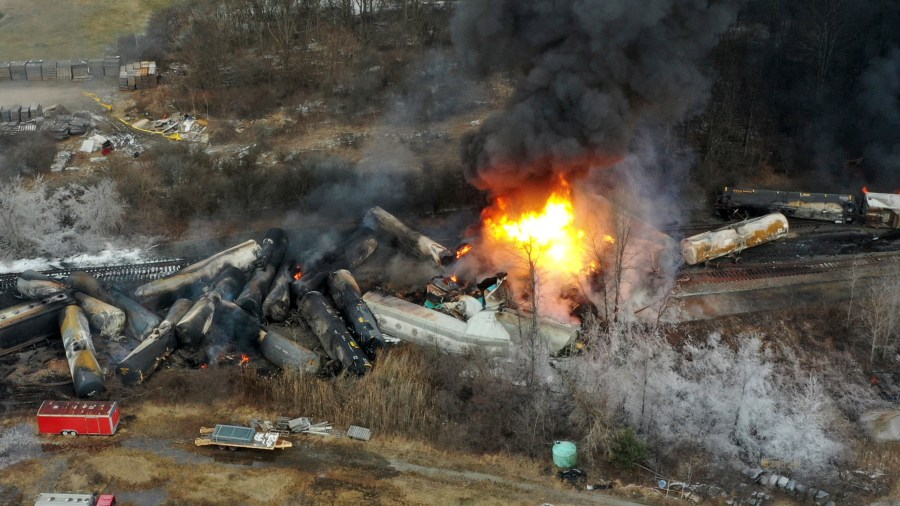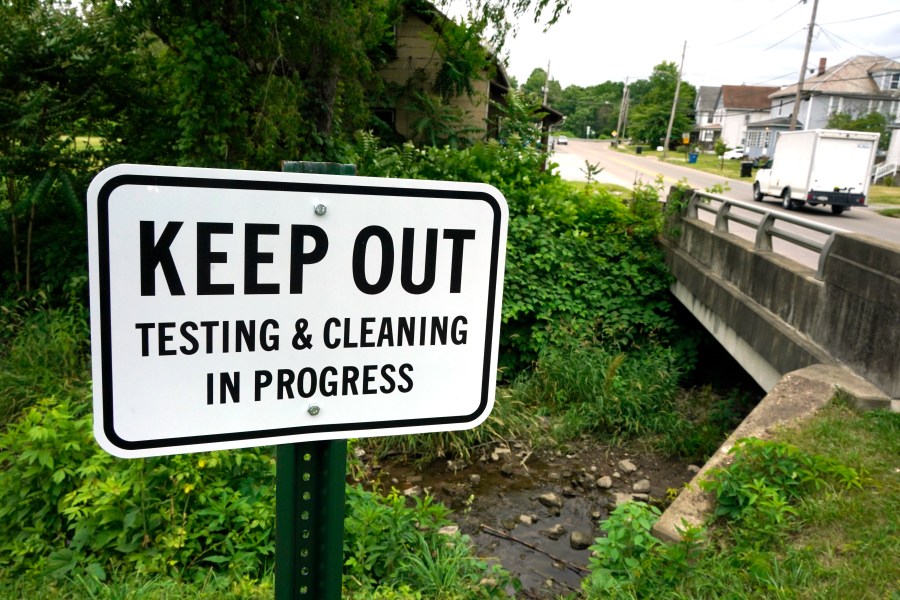Ohio derailment still causing housing challenges
- Some residents impacted by the derailment are hesitant to return home
- Norfolk Southern's temporary relocation program is set to end Feb. 9
- Residents now must choose whether to return home or leave it behind
Testing on staging11
(NewsNation) — In East Palestine, Ohio, the relief of walking through the front door after a long day — the full-body sigh as you step back into your comfort zone — is a privilege that resident Ashley McCollum no longer has.
For the past year, McCollum spent her days in a hotel on the outskirts of town, taking with her only the parts of her old life that fit into a standard-sized room.
Now, a year after a Norfolk Southern train derailment released toxic chemicals into East Palestine and the surrounding area, McCollum and others are faced with a difficult choice: return home or leave it behind.
“I don’t think I’ll ever feel comfortable, not only just from the trauma of what’s happened and dealing with this day in and day out,” she said. “I don’t feel safe in my home. That’s not home anymore.”
In March, Norfolk Southern established a relocation program for residents like McCollum during the intensive phase of the remediation work at the derailment site.
In December, the company announced the program would be coming to an end Feb. 9. Since then, families have been steadily returning home, and less than 40 households are still participating in the relocation program, according to Norfolk Southern.
Faced with the reality of leaving their temporary shelter paid for by the rail company, some feel they have nowhere to turn.
“My mortgage is $187,” McCollum said. “I cannot get that anywhere. I could work a part-time job and still enjoy my time with my family (before the derailment). Now, if I go and try to sell my home and get a new mortgage, I’m going to be working and never seeing my family.”
Others who have returned home have reported ongoing health concerns. Those looking to sell now face the added hurdle of securing a mortgage or rental property after a trying year.
Christa Graves is still in her Unity Township home — a few miles north of East Palestine — for now. She vowed early on that when the time was right, she and her family would leave the area for good.

“I’m not realizing at the time, holy crap, I’d be selling a potentially contaminated home to another family to get sick,” Graves said. “But if they’re not going to help us, I’m not staying here. I’m not going to endanger my family.”
The U.S. Environmental Protection Agency (EPA) and the railway have both told residents threats to their health have been handled.
Sample collection and testing is ongoing. To date, the EPA has collected more than 115 million air monitoring data points and more than 45,000 samples, a spokesperson told NewsNation in an email.
“This data collection continues, and ongoing science-based reviews show that residents of East Palestine are not in danger from impacted surface water, soil, or air from the derailment,” the agency said. “Drinking water testing has consistently shown that it has not been impacted from the derailments and continues to meet drinking water safety standards.”
Some homes and businesses did have detectable levels of contaminants, according to the EPA. Those residents were temporarily relocated. The EPA maintains that no vinyl chloride or hydrogen chloride was detected in homes.

Since the derailment, Norfolk Southern has also invested $103.2 million into the community and announced programs to support the impacted areas’ economic development, home values and water monitoring as well as a long-term health fund.
Locals’ trust in those test results and assurances of safety, however, has eroded and remains a point of contention. Some residents continue to report physical ailments upon returning home to gather belongings and collect their mail.
Residents who spoke to NewsNation described migraines, tooth pain, exasperated symptoms of preexisting conditions and other health concerns that developed or worsened after the derailment.
Locals said their symptoms improved when they left the contaminated area, but gaps in research on the specific chemical exposures from the derailment have left doctors unable to definitively link symptoms to the event.
“I have narcolepsy,” Graves said. “That seems to be worsening. I’m having less energy than ever. I’m just feeling like a limp rag getting dragged around.”

Graves wasn’t eligible for all of the assistance she hoped she might receive, including relocation. Like others, she wants Norfolk Southern to “buy out” her family so they can move on.
“Buy us out at a rate that will allow us to have a similar property in another similar area,” Graves said. “I want us to have health care provided that is not going to nitpick because we’re never going to be able to separate what was preexisting from what is worsened from this to what is brand new from this. It’s going to be very hard to untangle that.”
The Ohio governor’s office says those issues should be sorted out through ongoing litigation, emphasizing the EPA’s findings that residents are safe to return home without fear of contamination.
“We do understand that out of an abundance of caution, individual families may make a different determination for their family that they do not want to return to their home,” said Dan Tierney, Gov. Mike DeWine’s press secretary. “Again, I can only go by the testing that we have that tells us the air and water are safe in East Palestine.”
About 50 miles from Pittsburgh, East Palestine’s appeal to many locals lies in its scenic landscape, small-town feel and proximity to the city. Residents looked forward to summers spent offline and outdoors, fishing, camping and enjoying the land they now fear is a threat to their health.
“People don’t realize that this could happen anywhere,” Graves said. “Because on Feb. 3, at noon, nobody in the country knew we existed. The only reason to live here is because you have family here or, you know, it’s very quiet. We were very happy. It could happen anywhere. This was the last thing in the world we ever expected.”